Last-Minute NYC Holiday Gift Guide 🎁
We’ve created a holiday gift guide with presents for the intrepid New Yorker that should arrive just in time—


The Esopus Meadow Lighthouse is quite possibly the most adorable lighthouse along the Hudson River. All of the lighthouses have their own distinctive architectural style, but the Esopus Meadow Lighthouse, located south of Kingston, is the only one that survives in a wood-frame Georgian Colonial style (albeit with a French-style mansard roof on top). Green shutters that actually open and close (unlike those on many suburban houses) form a nice color contrast to the white clapboard façade and red roof. A turret emerges from the center of the roof, where affixed in red is the year 1871 — the year the Esopus Meadow Lighthouse began construction. The lighthouse tower ends on an octagonal deck that once housed an optic fifth-order Fresnel lens whose beam could be seen for twelve nautical miles.
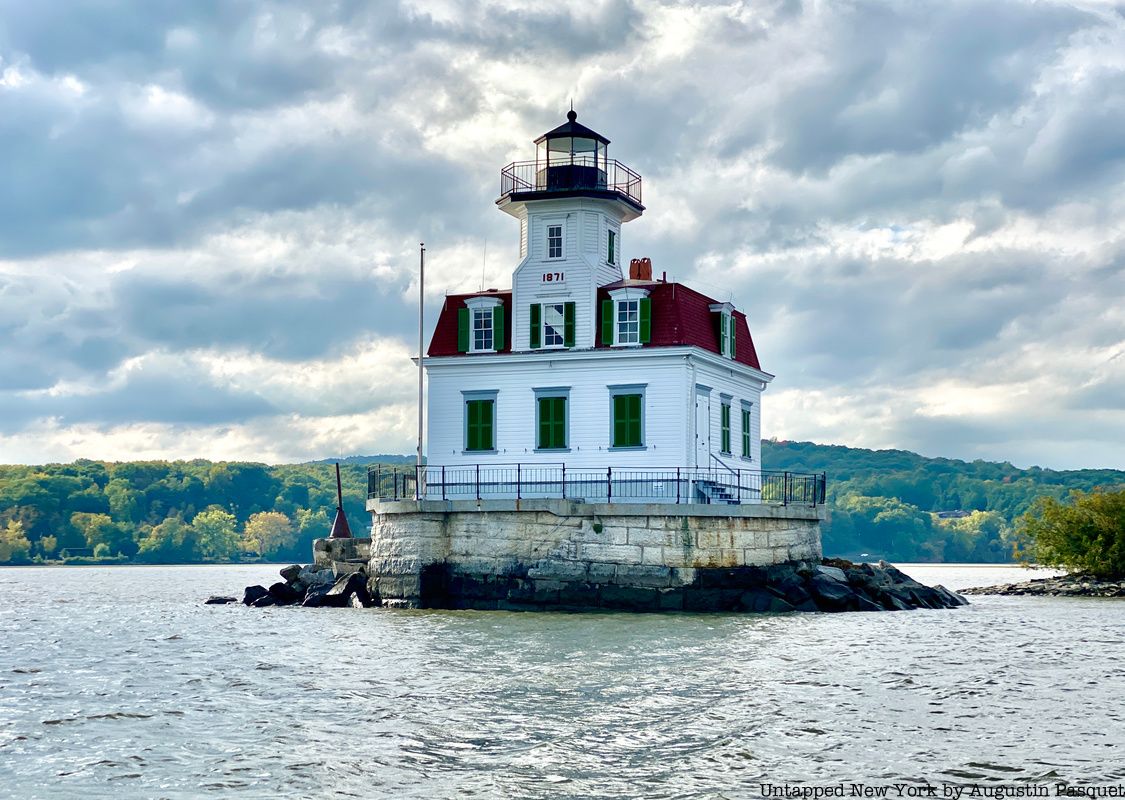
We recently got up close and personal with the lighthouse on a Dual Lighthouse Boat Tour with the Hudson River Maritime Museum aboard their boat, Solaris, the only US Coast Guard-approved 100% solar powered passenger vessel in the United States. The captain on the Solaris was Sam Merrett, who also piloted the carbon-neutral Schooner Apollonia on its visit to New York City in August.
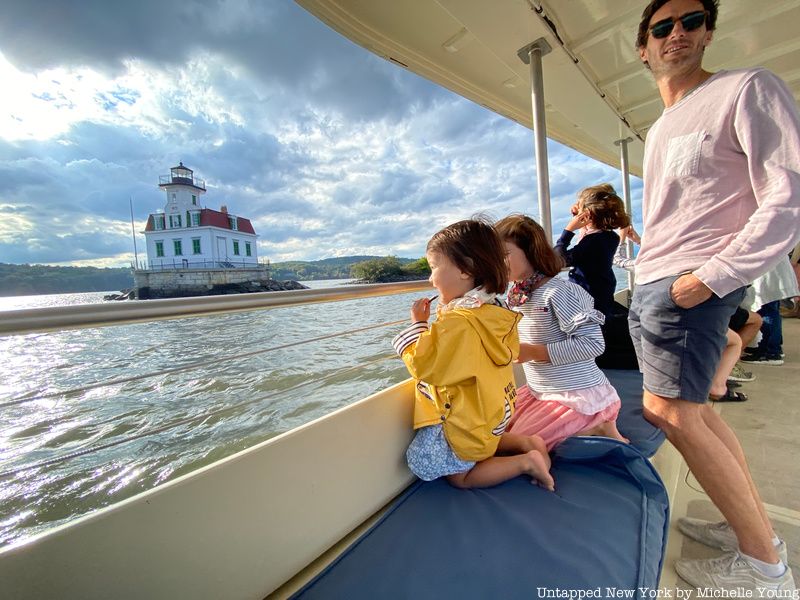
The Esopus Meadow Lighthouse is located on the Hudson River between the Esopus Meadow Preserve in Ulster Park, NY on the west and Staatsburg, NY on the east. It’s named after a watery meadow that used to exist on the Hudson River where cows once grazed. “The opening of the Erie Canal in 1825 brought about a boom in shipping along the river,” reads the nomination form from the National Register for Historic Places for the lighthouse, It enabled the agricultural products from the Northwest to make their way to ports in New York. After the Delaware and Hudson Canal opened in 1828, coal from Pennsylvania was shipped to Kingston for distribution in the east, making the need for navigational aids in the upper Hudson even more important. River travel became an integral part of the development of the communities along its shores as well as the state of New York and the upper Mid-West.”
The lighthouse, nicknamed “The Maid of the Meadows” is the second lighthouse around this site, a replacement for an original structure built in 1839. The first lighthouse was of the same design as the Roundout Lighthouse (shown below) a little less than four miles away in Kingston but it had suffered “ruinous damage” from ice and flooding.
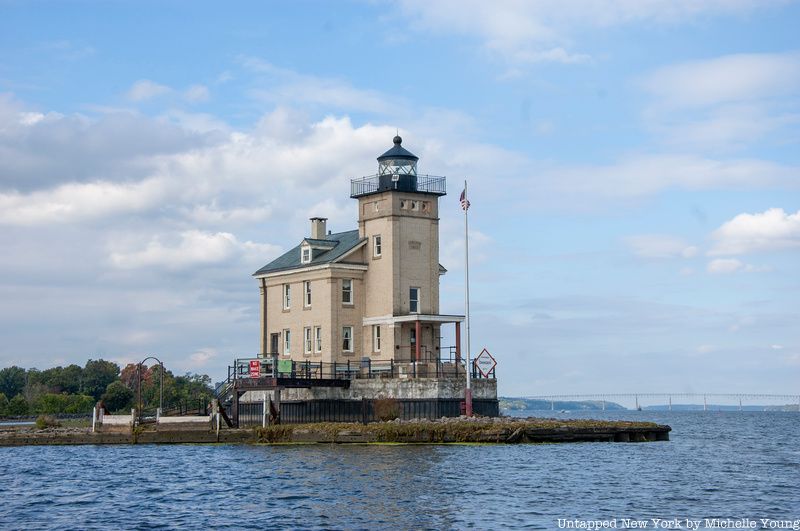
The Roundout Lighthouse
The current Esopus Meadow Lighthouse was built at a cost of $25,000 provided by Congress. The lighthouse sits on a granite pier and the pilings that form the foundation of the lighthouse go forty feet down into the riverbed of the Hudson River, a hundred feet southeast from the original lighthouse. Merrett told us on the tour, “If you’re a north or southbound ship, it seems like a big, wide open river right? But the reason they put the lighthouse out there is that if you go down that [way], you’ll get stuck every time.” That aforementioned cow-grazing meadow is now submerged below water, posing an invisible danger to boaters on the river. Tanya van Renesse from the Hudson River Maritime Museum added that in the 1800s, lighthouses were the “only navigational aid,” compared to now with “tons of buoys marking the channel and dangers.”
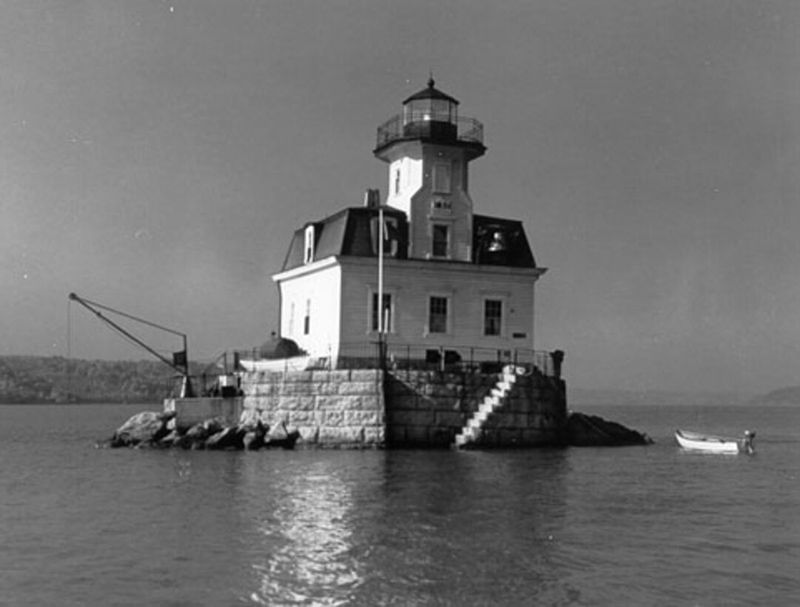
Historic photograph of the Esopus Meadow Lighthouse from US Coast Guard
Like the other lighthouses on the Hudson River, the Esopus Meadow Lighthouse was manned by lightkeepers who lived there with their families, if they had any. On a Dual Lighthouse Tour (in the non-Covid era), visitors are often allowed to go inside and see the interior of the lighthouse. On the first floor, there’s a cozy, wood-floor kitchen with white cabinets and wood countertops and sitting area, and an equipment area. The second floor has three bedrooms and bathrooms, plus access to the lighthouse tower.
[post_featured_tour]
If the design of the lighthouse looks familiar, it’s because it is based on one used on numerous lighthouses on the East Coast, though they all have a different application of materials. One sister lighthouse is the Stepping Stones Lighthouse in Long Island Sound. It’s made of brick with somewhat squashed dimensions in contrast to the Esopus Meadow Lighthouse.
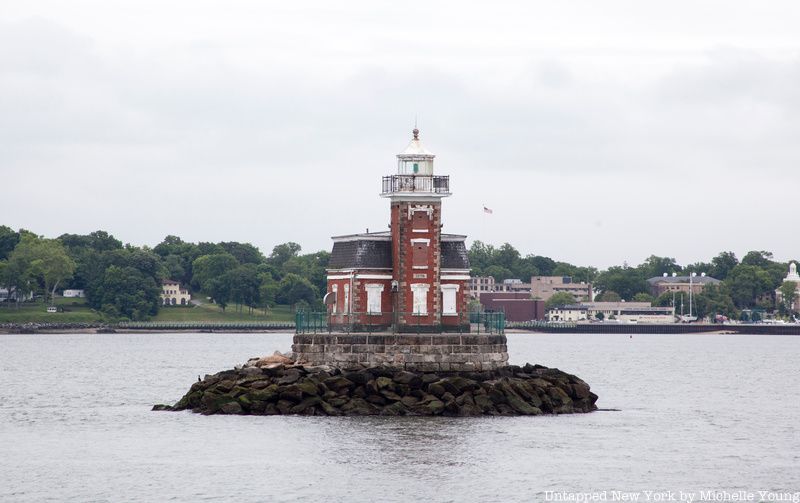
Stepping Stones Lighthouse
Lightkeepers kept watch at the Esopus Meadow Lighthouse until 1965 after which an automated solar power light was installed on a metal tower next to it. Like many other lighthouses that once served an essential navigational purpose the Esopus Lighthouse fell into disrepair with the advent of more modern technologies and was slated to be demolished by the Coast Guard, which had acquired the lighthouse in 1939. That is, until local groups, including the Hudson River Valley Commission, acted to save the lighthouse.
The lighthouse was listed on the National Register of Historic Places in 1979, as part of a thematic group that included seven lighthouses on the Hudson River. It took another decade for restoration to begin under the direction of the Save Esopus Lighthouse Commission (SELC). The Esopus Meadow Lighthouse organization, which is in charge of the lighthouse, was granted formal stewardship of the lighthouse in 2002 from the Coast Guard. The next year, a beacon of light returned to the lighthouse tower for the first time in 38 years, making it once again a “working navigational aid.”
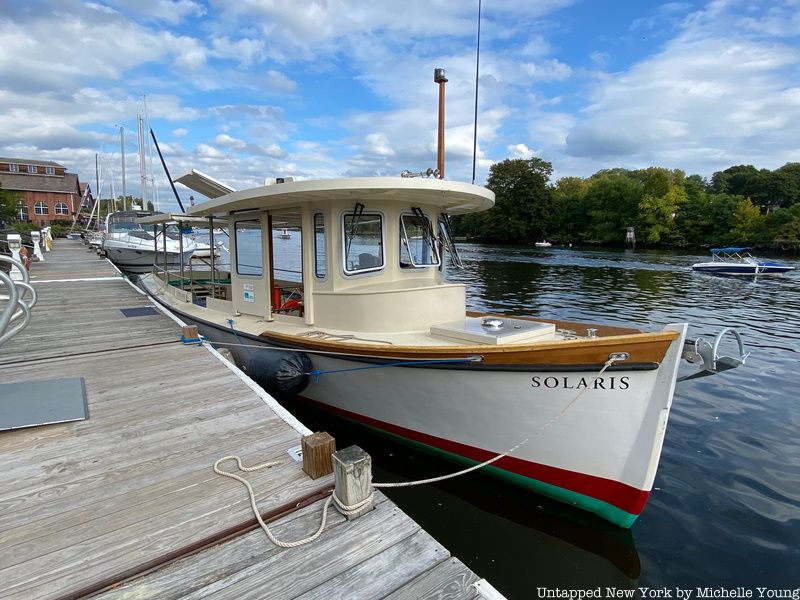
The solar boat Solaris
Equally exciting as the lighthouse was our transport to the Esopus Meadow Lighthouse. The Solaris has a vintage feel with a wooden hull and metal canopy, but it was launched just in 2019. It was built from scratch from 2017 to 2018 by the Hudson River Maritime Museum, designed by marine architect Dave Gerr from a concept developed by David Borton, owner of Sustainable Energy Systems based in Troy, New York. The
canopy is covered entirely with solar panels and can travel for up to 50 miles (or about nine hours) on just battery power. The panels are super efficient, generating power even on cloudy days and producing enough energy to go break even on a daytime trip.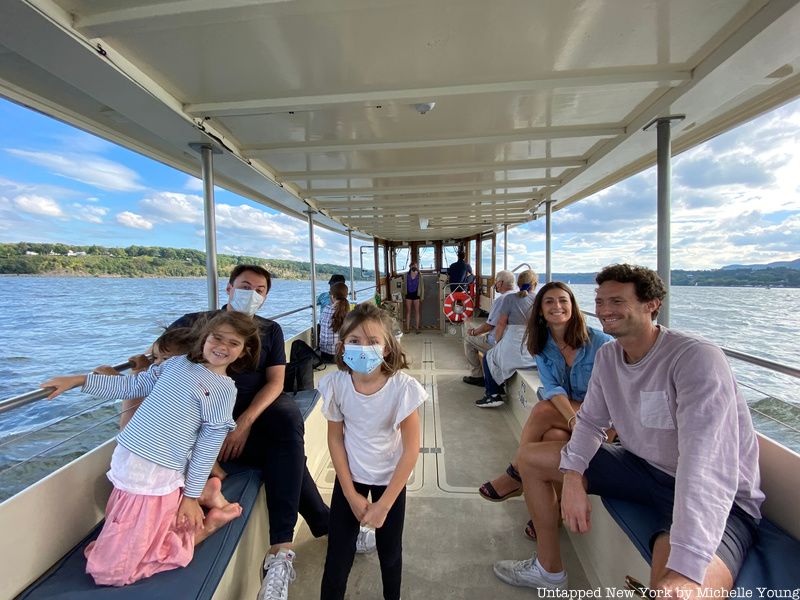
The Hudson River Maritime Museum also offers many other boat tours in addition to the Dual Lighthouse Tour, including a Fall Foliage Boat Tour, a Sunset Boat Tour, an After Dark Lantern Boat Tour, an Industrial Waterfront Boat Tour, an Ecology Exploration Boat Tour, and a Lazy Sunday Family Boat Cruise which includes a scavenger hunt. All the tours are socially distanced and have reduced capacity.
Next, check out 6 more lighthouses on the Hudson River!
Subscribe to our newsletter